
How we can help Canada's at-risk turtles survive and thrive
"Every adult we lose [has] a really big impact on the population," says James Page, a species at risk and biodiversity specialist with Canadian Wildlife Federation (CWF).
Slow and steady may help turtles win the race to find the perfect nesting site to breed, but humans have a vital role in ensuring they reach that finish line.
With summer nearly here, turtles are more mobile now as they search for partners and ideal grounds to lay their eggs.
RELATED: Turtles are out more than ever this time of year. How you can protect them
Many species of turtle are at risk, endangered or of special concern, so it’s even more critical they have successful breeding each year.
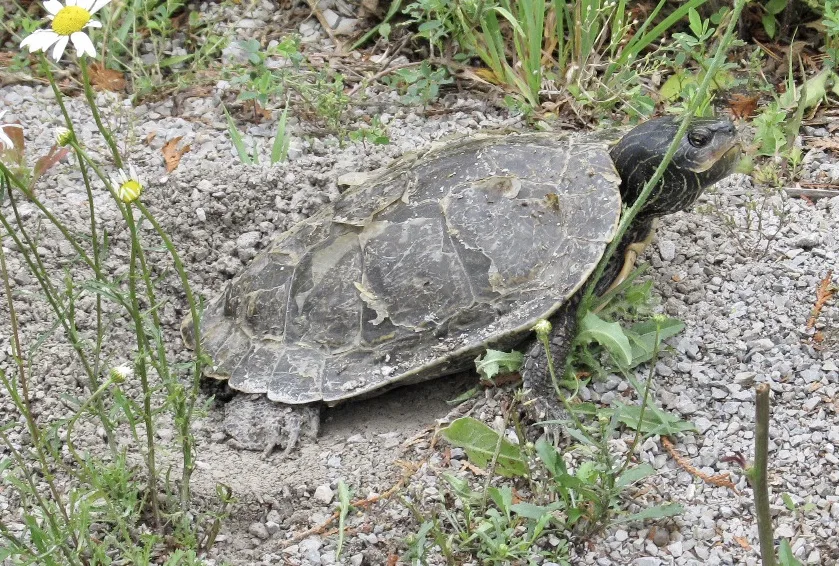
A northern map turtle attempting to make a nest on the side of the road. (Warren Howes)
In 2020 alone, there were more than 1,000 turtles found dead on the roads in two study areas in Ontario, according to James Page, species at risk and biodiversity specialist with Canadian Wildlife Federation (CWF).
Turtles can take up to two decades or longer before reproducing.
“That’s a huge number, especially because turtles take a long time to be old enough to reproduce. Every adult turtle we’re losing, depending on the species, it could be up to 20 years before that young one is old enough to contribute again to that population," Page told The Weather Network in a 2021 interview.
"Every adult we lose [has] a really big impact on the population."
ROAD MORTALITY IS MAJOR FACTOR IN POPULATION DECLINE
While there are numerous reasons for the decline of turtles, road mortality is one of the major contributors to the deaths.
This is why the CWF has at least two initiatives devoted to the issue, conducting road surveys with the Eastern Ontario Turtle Project and through a partnership with Scales Nature Park called Saving Turtles At Risk Today (S.T.A.R.T.), which covers Simcoe-Muskoka region in central Ontario.
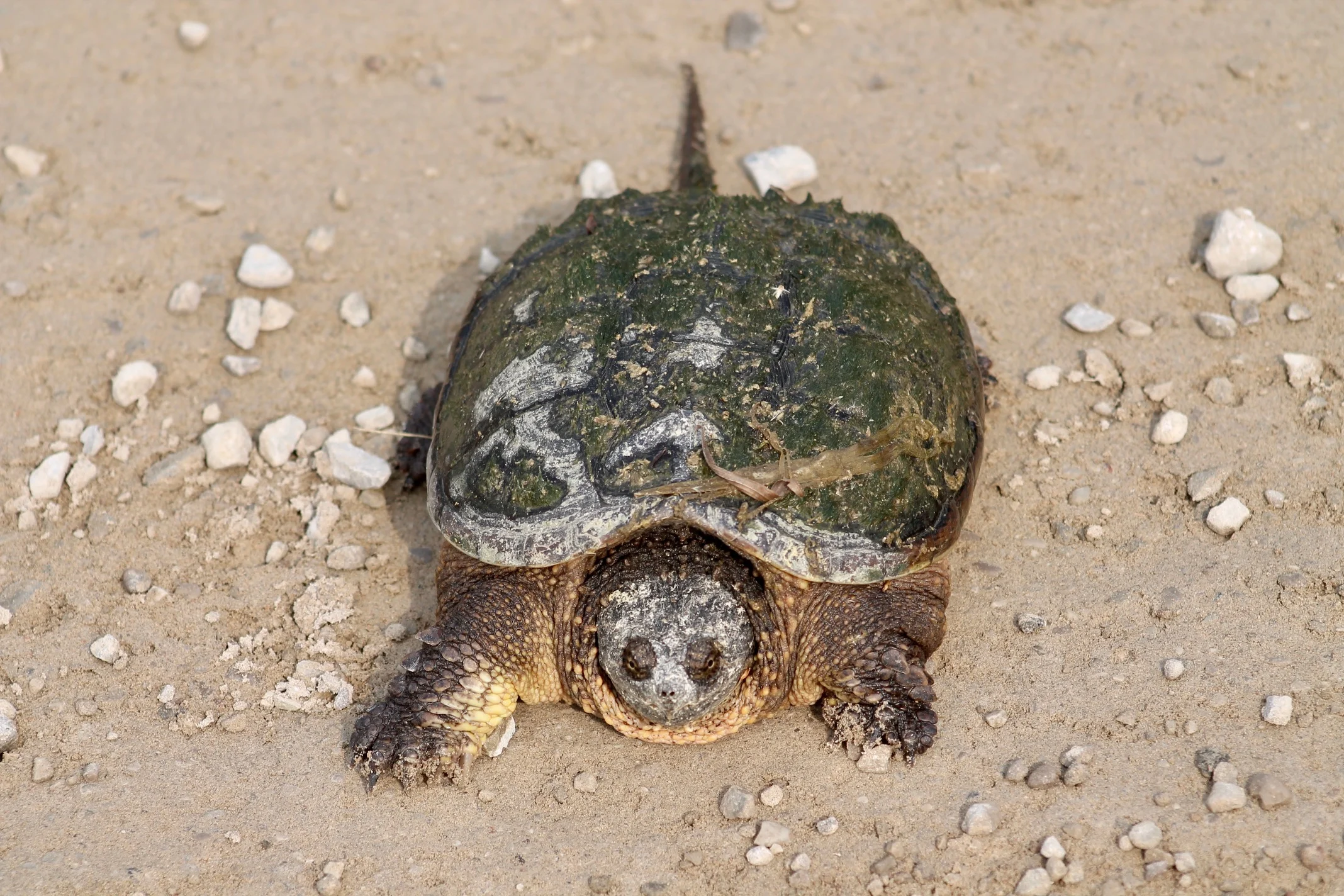
Turtles can take up to two decades or longer before reproducing. (Warren Howes).
The surveys are a way to find “hot spots” in Ontario for turtle mortality, locations where deaths are most concentrated, Page said, which allows CWF to work on mitigating the losses by installing fences and culverts to keep the turtles off the road.
“We have done [this] in the two worst hot spots in Ontario for roadkill. It has completely eliminated [deaths]. The year after, we checked again and there was absolutely no roadkill on those sites,” said Page.
In the past several years, S.T.A.R.T. has discovered more than 1,500 turtles dead on roads in the Simcoe-Muskoka area, while safely removing more than 1,000 of them off roads. Additionally, more than 48,000 hatchlings have been released back into the wild since the project began in 2013.
WHY TURTLES NEST NEAR ROADWAYS
The nesting sites of turtles are located near roadways because they often cross through wetlands, moving from area to another to mate and lay their eggs, Page noted.
As well, road shoulders act as adequate nesting spots due to the gravel-composed soils that make for perfect breeding grounds to house the eggs.
"Turtles see this as a good site, not realizing or not understanding that the high traffic volume makes it not a good site. But they don't know that," said Page.
--
So the threat to them at roadside is multifaceted, with a risk to turtles from their nests being so close to the roads, and when they're mobile, attempting to cross the roads to get to wetlands.
"If that doesn't get them, then when the young hatchlings emerge in the late summer-fall, those young turtles, hopefully, will go away from the road and not onto the road after they emerge from their nest site," said Page.
OTHER THREATS TO TURTLES
Other threats to their survival include nest predation from "subsidized predators" -- an overabundance of species that are in or near urban centres, Page said, which includes raccoons and skunks.
"In these areas, they are digging up a lot of the turtle nests, pretty much right after the turtles (build) their nests. Come the next day, a lot of them are dug up and predated by some of these predators," said Page.
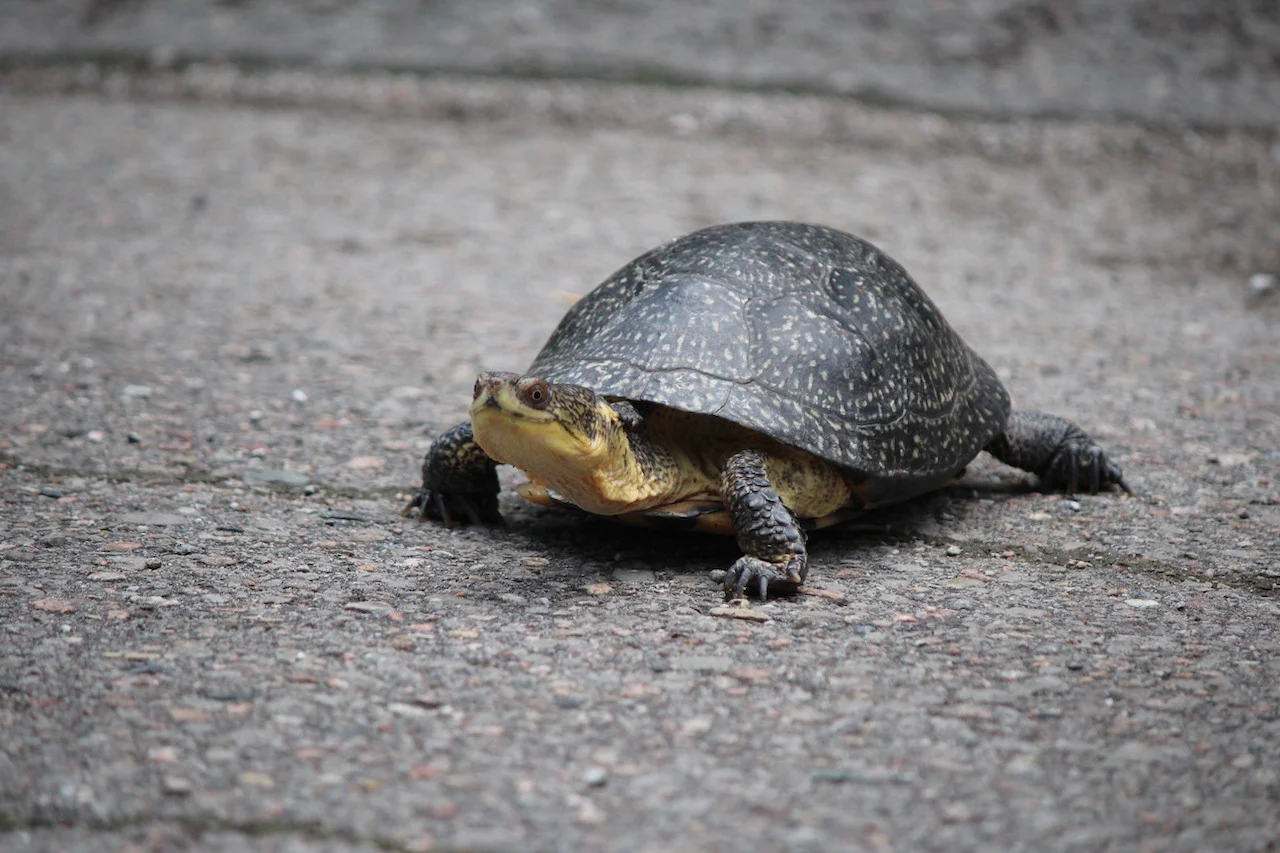
Blanding's turtle. (Nature Conservancy of Canada).
The loss of habitat, including wetlands due to road construction, has also had significant negative impacts on the turtle populations.
HOW YOU CAN HELP TURTLES
There are things people can do to help reduce the turtle fatalities each year including averting road collisions if you see them on the roads.
“Some can be quite big, they don’t move super quick, so they should be easy enough to spot and avoid, providing it is safe to do so. Obviously, we don’t want to put anyone in harm’s way [by] swerving a turtle and causing harm to themselves," said Page.
If you see a turtle on the road and it is safe to do so, you can pull over to the shoulder, get out and help the turtle get across the road.
“Move it always in the direction it was already going because that’s the way it is going to go. If you move it to the opposite side, it is just going to try and cross again," said Page.
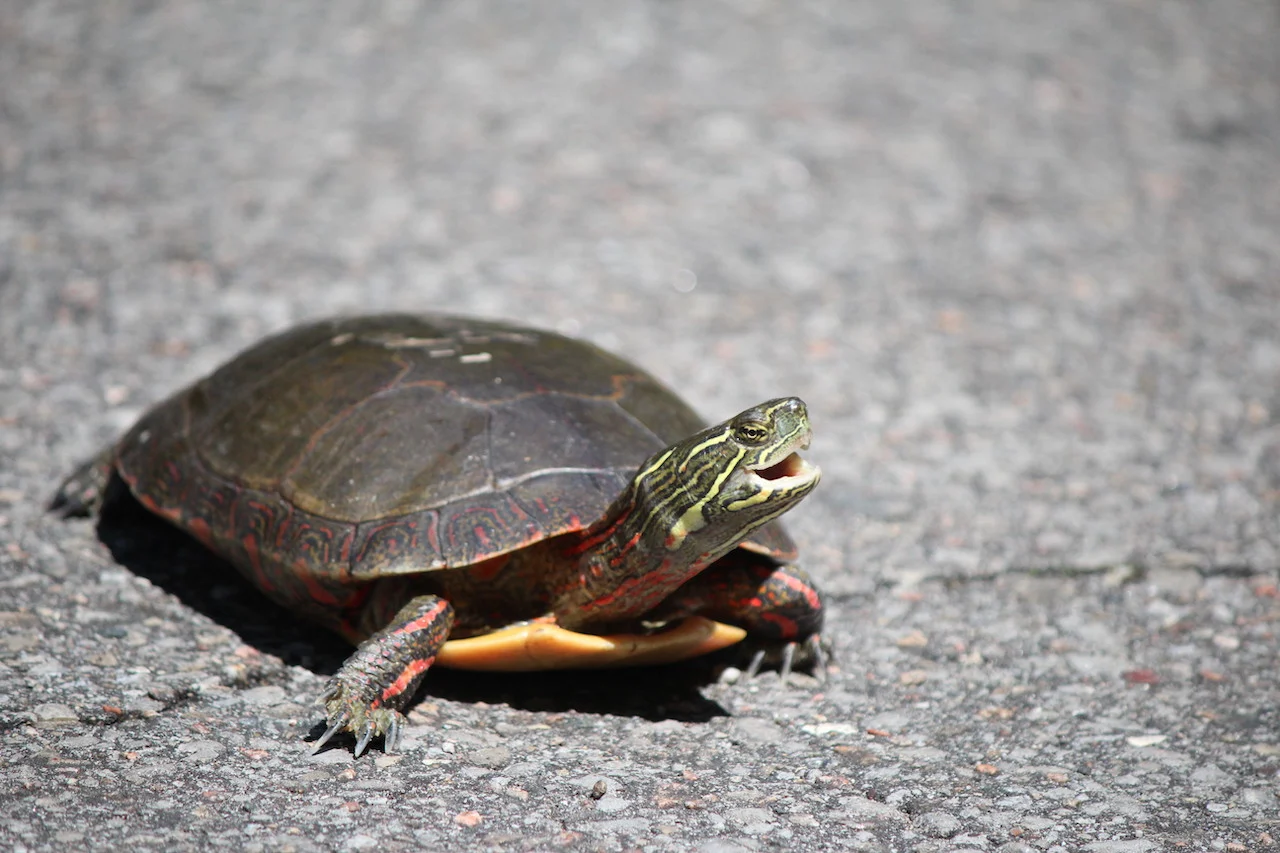
Painted turtle. (Nature Conservancy of Canada).
If you see a turtle, whether in the wild or along the road, in the Simcoe-Muskoka region, call or text the S.T.A.R.T. hotline at 705-955-4284.
If you do find an injured turtle on the road, you can contact the Ontario Turtle Conservation Centre at 705-741-5000 or any local wildlife rehabilitation centre. More information can also be found here.
HOW TO SAFELY MOVE A TURTLE ACROSS THE ROAD
The Nature Conservancy of Canada (NCC) also has some tips if you do decide to pull over to the side of the road to help a turtle cross.
For turtles that hide their heads in their shells (like Blanding’s turtle and Midland painted turtle), simply pick the turtle up, gently holding it with both hands, supporting its belly and holding the top of its shell, and carry it across the road. Carry it close to the ground -- you don’t want to drop it
READ MORE: Here’s what to stock your vehicle emergency kit with, BEFORE you hit the road
Snapping turtles are big. To move them and avoid injury to the turtle, lift them using the “handles” on either side of their tails on the back of their shells and “wheelbarrow” them across the road on their front legs. If you have a floor mat or a shovel, carefully slide the turtle onto it and drag the mat or shovel across the road
Once you are done moving the turtle, back away and let the turtle be, as to avoid causing it stress
Pushing or shoving turtles across the road with your feet or a stick is inadvisable. Their shells aren't as thick underneath, and rough pavement can do a lot of damage
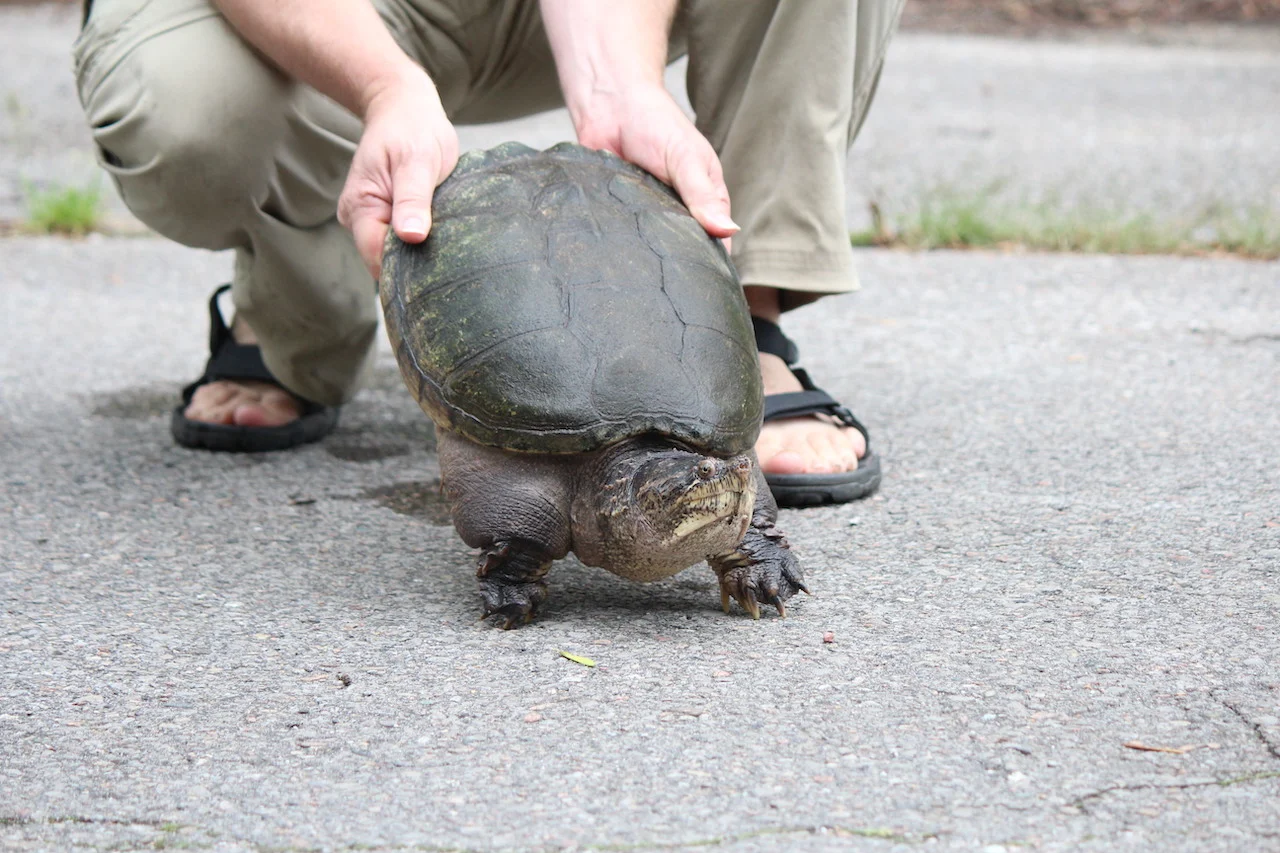
Snapping turtle. (Nature Conservancy of Canada).
According to NCC, three turtle species in Nova Scotia are at risk, including Blanding’s, which can only be found in three areas. Wood turtles are listed as threatened in Nova Scotia and New Brunswick, while snapping turtles are categorized as vulnerable/special concern.
“Turtles are in many ways the unsung heroes of our wetland ecosystems,” said Kristyn Ferguson, program director with the NCC, in a news release. “They help keep wetlands clean and healthy by eating dead plants, insects and animals, and play the role of the wetland janitor.”
In Ontario, where Blanding’s turtles are more endangered than pandas, all eight turtle species are at risk, NCC says. In Quebec, five turtle species are provincially designated as threatened or vulnerable.






